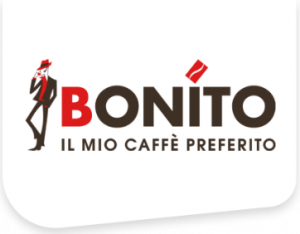the coffee
Home » The coffee
THE COFFEE PLANT
Coffea, which is the coffee plant (Rubiaceae family), that originates from the Arabian Peninsula, is present nowadays in the entire equatorial belt. The trees can reach up to 10 metres in height and have oval leaves and white and fragrant flowers arranged in clusters; its fruit is similar to a berry containing two seeds. Each plant produces up to 2 kg of coffee a year.
There are about seventy different species of Coffea, among which the most common are Arabica and Robusta.
Arabica has an intense aroma and light and deep taste. It contains a minimum level of caffeine. It is mainly produced in South America at an altitude between 900 and 1,200 metres and covers 3/4 of the world production.
Robusta is a vigorous species with a strong and full-bodied taste and has a higher caffeine content.
It is mostly produced in Africa, India, Indonesia and Vietnam at an altitude below 500 metres.

COFFEE HARVEST
There are three methods:
- The picking consists in the manual selection of every single fruit once it is perfectly ripe and this harvesting method guarantees the best results.
- The stripping occurs within a particular period of time, when the person responsible for the plantation decides upon an average ripening point, at which all the fruits are ripped off the branches.
- Mechanical harvesting is carried out in huge plantations where the distance between rows is large, with a machine that shakes the plants causing the ripest fruits to fall.

EXTRACTION
Coffee beans are deprived of the pulp and separated from impurities by two methods: dry or wet.
Dry process: the fruits are laid out to dry in the sun or in dryers. They are then sieved, shattered and passed again through sieves. This allows to separate the beans from the impurities: the “corrientes” or “natural” kinds of coffee are obtained.
Humid procedure: the fruits are dragged into flowing channels where they are sieved so that the shell may be removed. Subsequently they are placed in fermentation stacks for almost two days where repeated washings remove the sugary coating. The beans are then dried under the sun or artificially, and are freed of any last remains. Thus, the “lavados” or “washed” kinds of coffee are produced, more prestigious than the “corrientes” or “natural” coffees produced with the dry process.

COFFEE ROASTING
During the coffee roasting procedure, or toasting, the raw beans are first selected and then put into roasting machines.
Here they are heated up and stirred constantly until the temperature reaches around 200 ° C. During the roasting phase, the beans decrease in weight (-20%), increase their volume (+ 60%) and they are chemically modified; thus the aromatic components of coffee are formed, consequently, the coffee loses acidity and assumes a bitter taste; the more the coffee is roasted, the stronger the taste is.
At the same time, the coffee acquires a dark brown color called “monk’s robe”.

BLENDING AND GRINDING
Blending consists of the right dosing of different types of coffee in order to obtain the desired blend.
Each Bonito blend has its baseline quality standard, established by a team of experts, who guarantee its conformity regardless of the difference of various coffee crops. Then the grinding follows: fine for the espresso machine, medium for the mocha, coarser for the filter coffee maker.

PACKAGING
Packaging is a very important stage as the coffee components can oxidize and deteriorate on contact with air.
Therefore, after being roasted and, above all, after being kept for about 24/36 hours in the various storage silos in order to eliminate a part of the CO2 from roasting, the coffee is packaged in 1 kg packs, equipped with an aroma-saving valve. (which lets out the CO2 but does not let the air in).
Bonito ground coffee applies vacuum packaging with water-based inks, rather than solvent-based, which makes the packaging completely safe and eco-friendly.

 Skip to content
Skip to content


